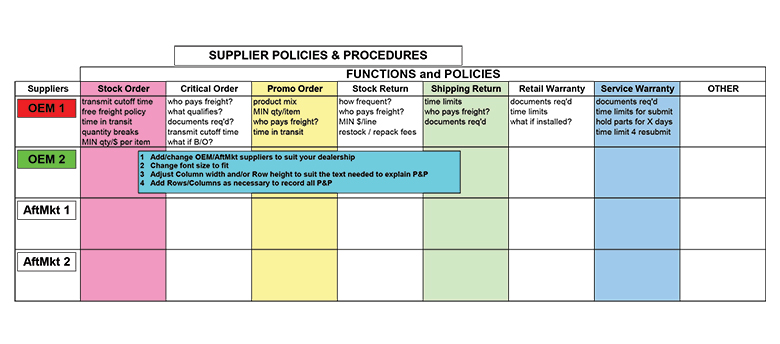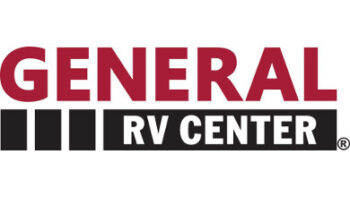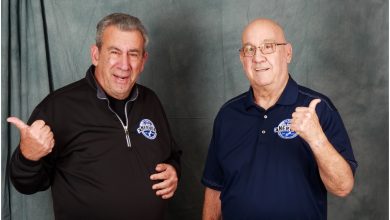Sustainability of Parts & Accessories Inventories
Three ways to increase efficiency and profitability.

Sustainability is the special theme for March’s issue of RV PRO, so I have dedicated my column to assist you in sustaining your parts and accessories inventories — efficiently and profitably.
Simply stated, I define sustainable parts and accessories inventories as containing the necessary mix of goods in the quantities needed during specific periods of the year.
However, you might be asking how do you comply with that status? One method for doing this is to record every sale, which should include …
Recording Every Lost Sale
In the 1970s when I started my career as a parts manager, I attended an inventory management workshop. The workshop facilitator stated: If you record every lost sale, you could experience fewer lost sales.
What this means is that by listening to your customers’ requests and recording and reviewing any that cannot be fulfilled, you have a better chance of having that item for the next customer.
To assist you in identifying, and therefore recording, a lost sale, I provide my definition of a lost sale: Demand, not filled from stock, and not ordered.
Most dealership management systems (DMS) offer functions to record and to report lost sales. If you are interested in developing a sustainable parts and accessories inventory, I suggest that you start an effective lost sales policy and procedure. Contact your DMS technical support service for assistance with these functions.
If your DMS does not offer a lost sales recording function, then I suggest that you place a manual lost sales form at each parts department workstation. If you don’t want to develop your own form, I invite you to email me and request a copy of my version. The file name is “lost sale data form 050322.”
Another method for creating a sustainable parts and accessories inventory involves …
Your Suppliers
Most of you procure parts and accessories from at least two suppliers, yet most likely you have several suppliers. Each of these suppliers has policies and procedures for each of the business transactions between their business and your business. You should be aware of the current policies and procedures for each supplier and review these at least once each year because some of them might change and usually do.
Obtain a copy of these policies and procedures so that you understand how to properly transact business with each supplier. Do not accept a verbal statement from any employee of any of your suppliers. Review any communications involving parts and accessories from any of your suppliers when they are received so that you can update your compliance with these policies and procedures.
Some of your suppliers might have policies and procedures for the return of your goods. These could include returns due to:
- ordering errors caused by your parts associates
- order processing errors caused by the supplier’s personnel
- damages incurred during the shipment
- items that fail to sell in your market
If you are aware of a supplier’s return policies, then you have an opportunity to eliminate unwanted items from your parts and accessories inventories.
To assist you in compiling a record of these supplier policies and procedures, I invite you to email me and request my Excel tool named “RV vendor P&P mstr 081012,” a copy of which is shown at the top.
Another method of eliminating nonselling items via your suppliers could be by contacting your supplier representative to discuss a return/order possibility. Most likely, you have at least one primary aftermarket supplier. Here are a few things you should do before contacting that supplier’s representative:
- Determine the total cost of all parts and accessories that you have purchased from that supplier in the previous 12 months.
- Identify those items purchased from that supplier that you would like to return.
- Assign one of your parts associates to inspect each of these items to ensure that it’s in the original packaging and its condition is good enough to resell.
- Create a list of each item that qualifies as returnable, and determine the total cost value for all these items.
- Determine what cost of a replacement order you would be willing to place with the supplier to offset the total cost of the requested return items. For example, if you have $10,000 to return and you would be willing to purchase twice that amount in items that are currently selling in your market.
- Contact the supplier representative and discuss the possibility of a return/order agreement, making sure to remind that representative of the total cost of goods that you have purchased in the previous 12 months.
If none of these methods for improving the sustainability of your parts and accessories inventories pique your curiosity, then you could try …
Offering Special Deals
This method only applies to items that have a unit cost sufficient to justify the efforts to market them to customers. Perhaps a minimum unit cost of at least $75 might be your cutoff. Identify these items by generating a DMS exceptions report to show all items with a unit cost greater than $75, having no demand in at least 12 months and with an on-hand quantity greater than zero.
After printing the report, assign a parts associate the task of confirming the actual quantity and the condition of each item. Disregard any items that are not in sellable condition. Determine what brand/model/year of RV that each of these qualifying items fits. Decide at what price you are willing to offer each of these items, keeping in mind that the most you could get for each item is cost if you could return the item to the supplier — assuming the supplier allows a return. Identify any customers who own that brand/model/year RV, and assign your parts associates to contact the customers with a “special deal.”
What Else Could Be Done?
Having offered several methods for developing a sustainable parts and accessories inventory, all that remains is this thought: The secret to success is getting started.



